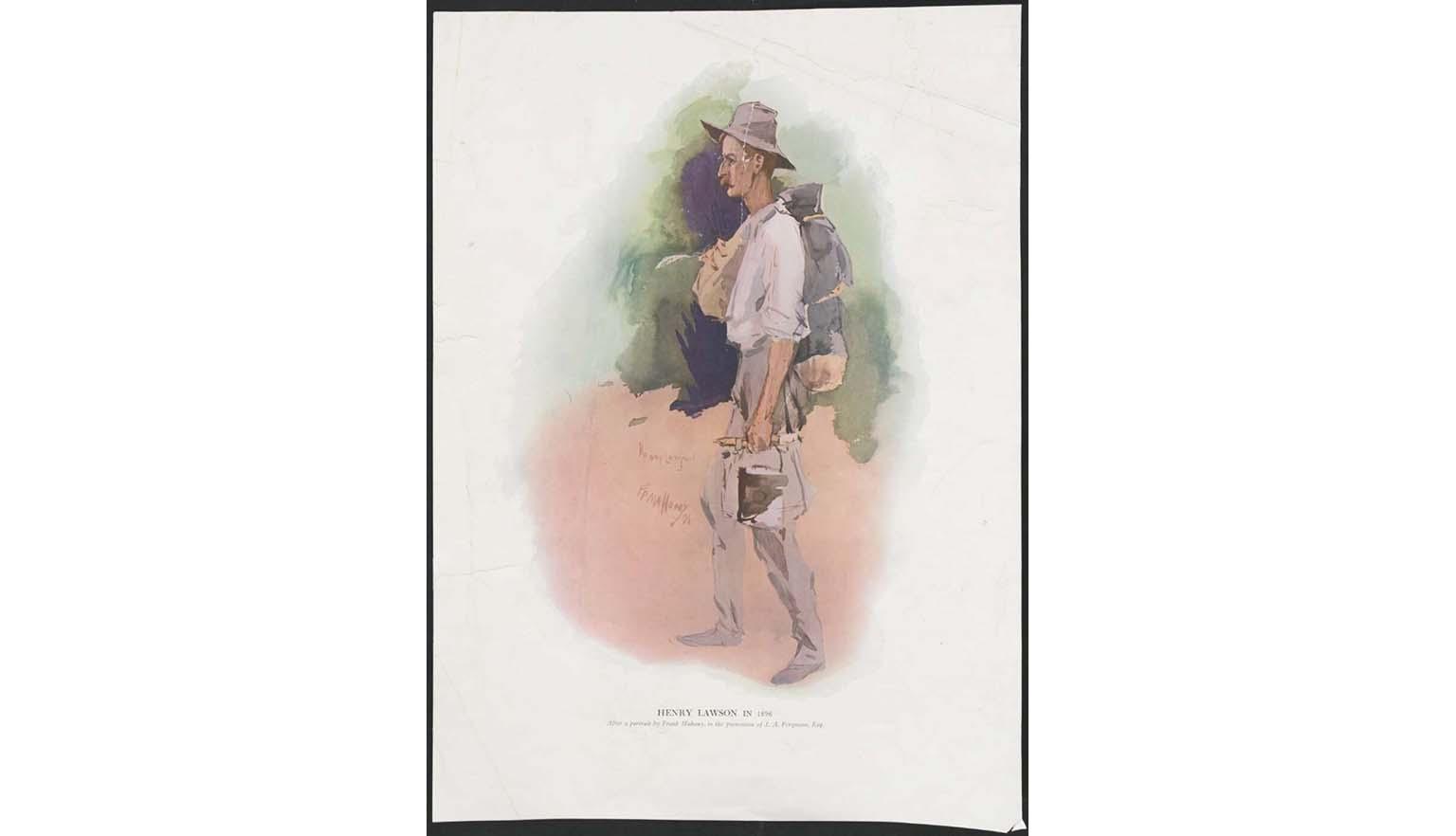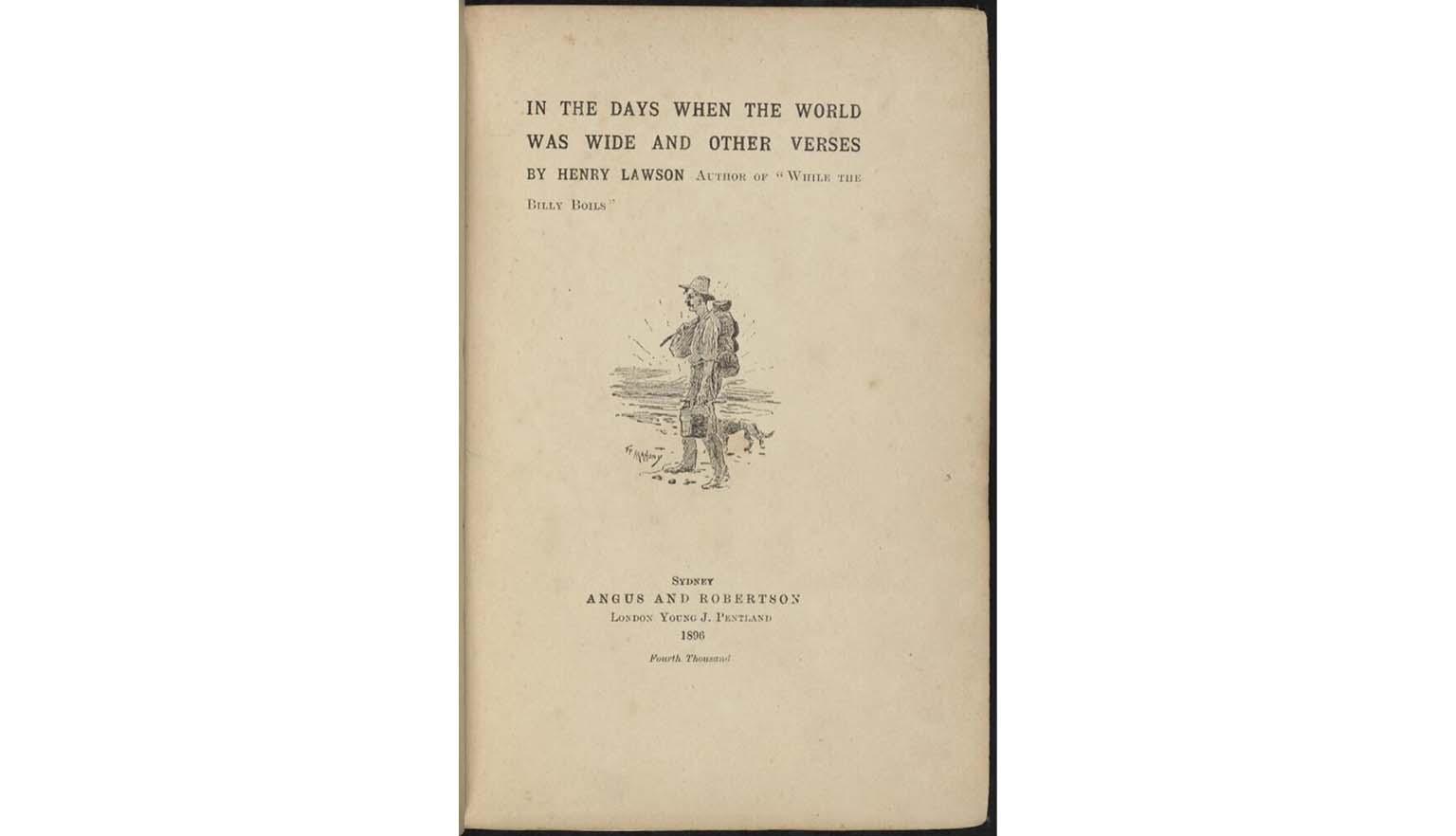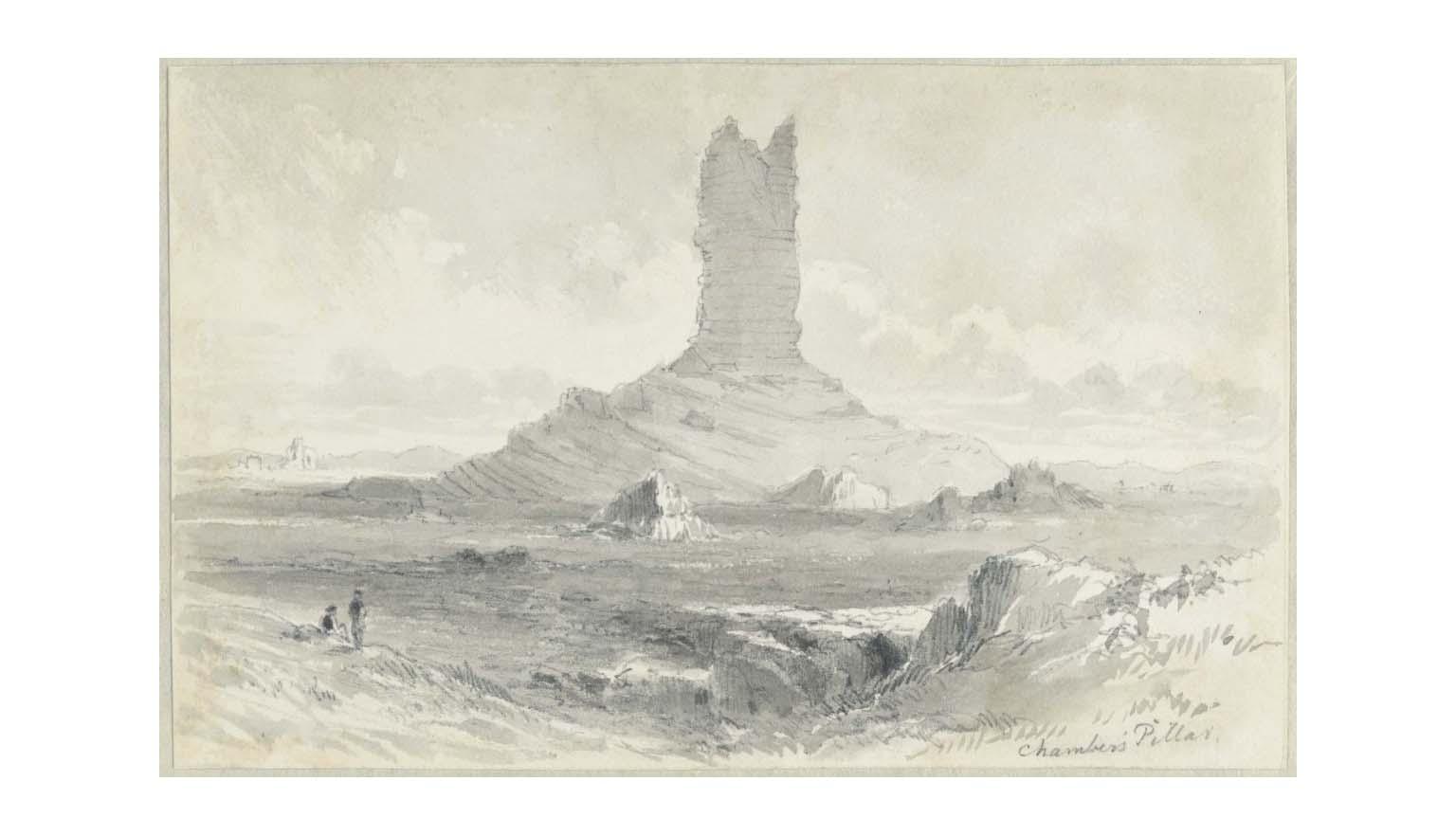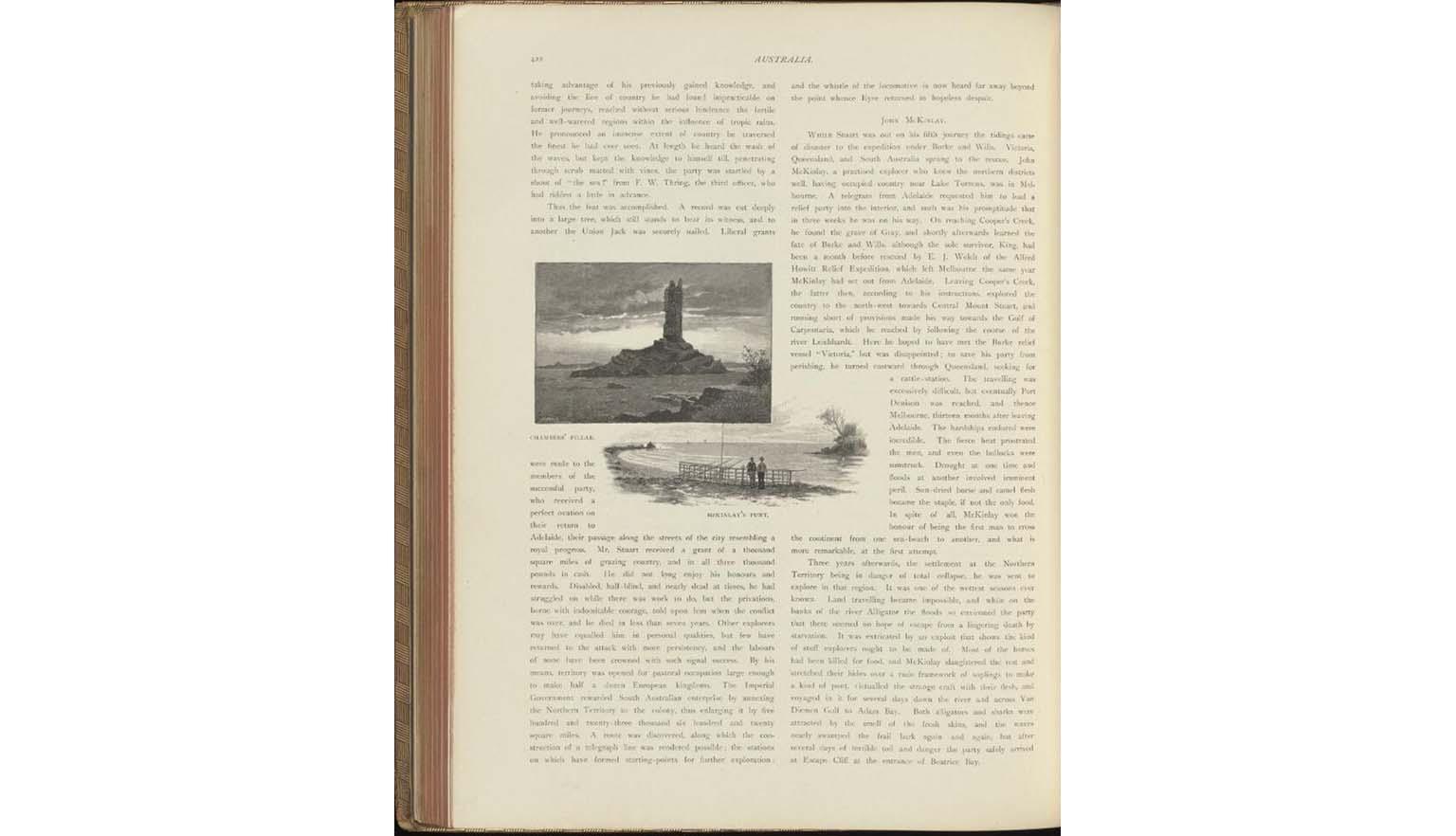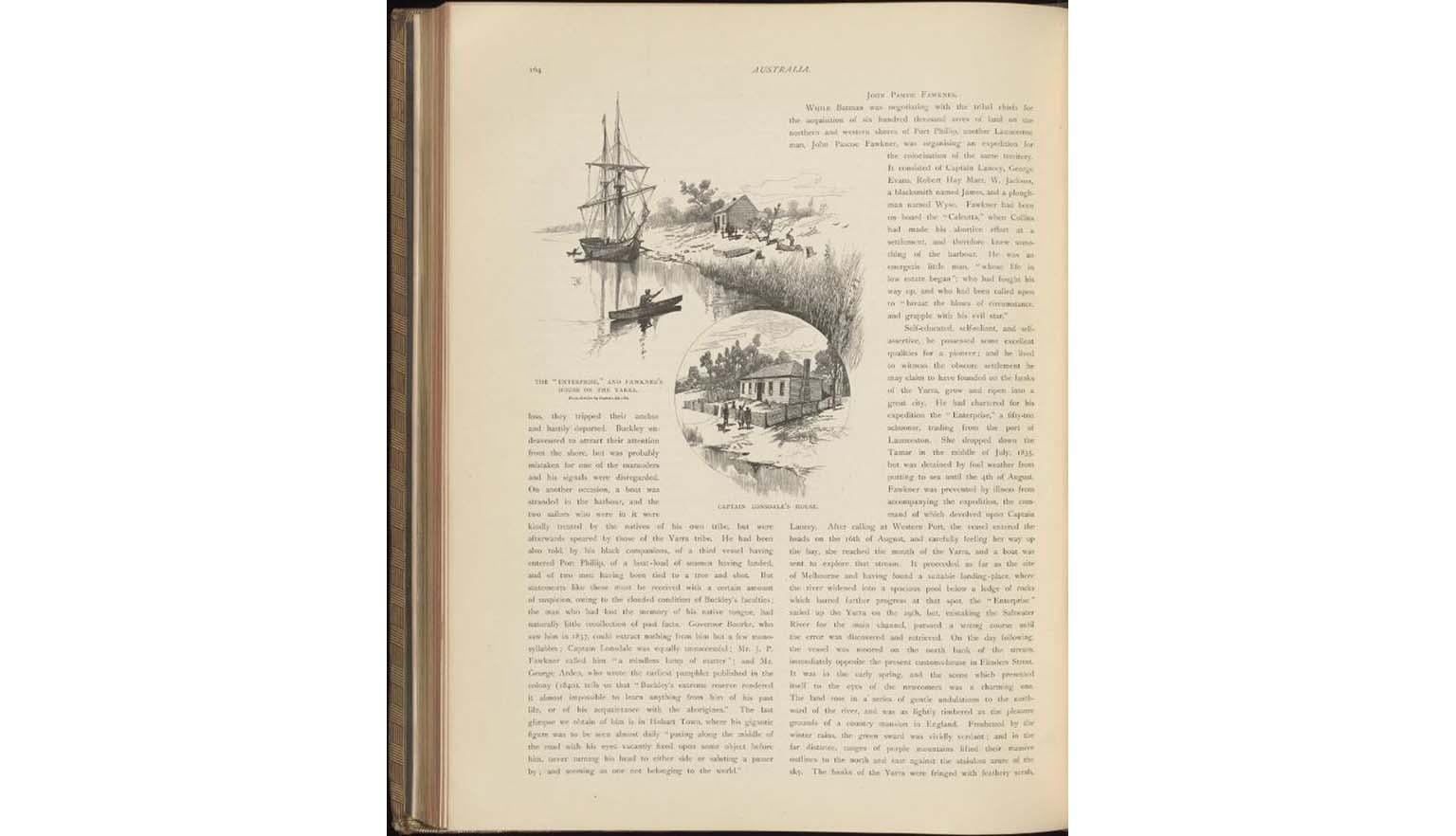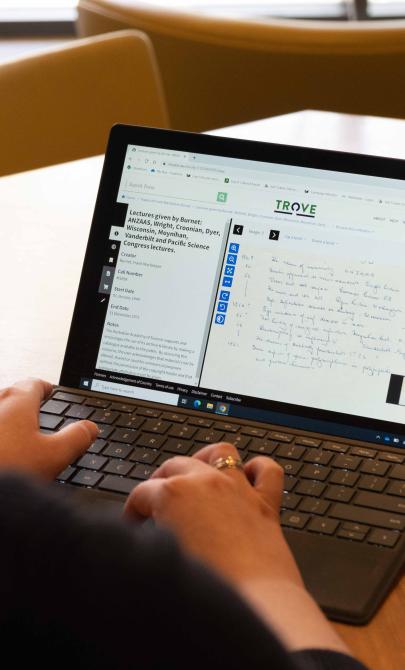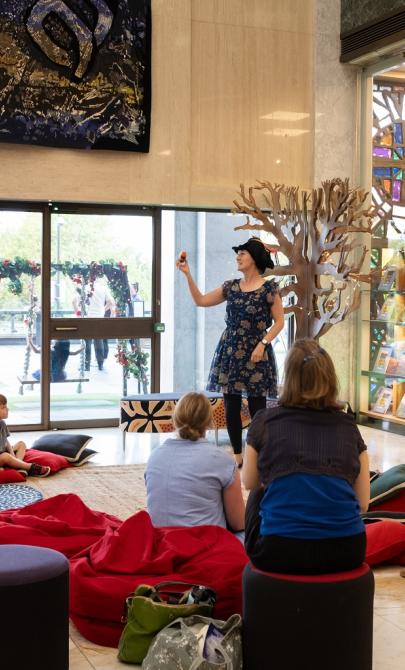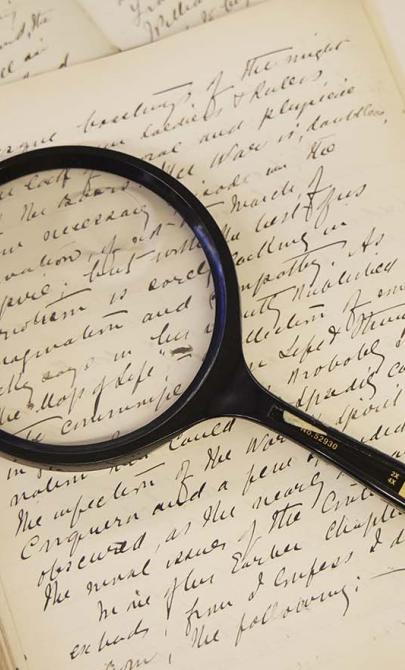Illustration and black-and-white art
The technology of illustration
Illustration was an unashamedly commercial and collaborative artform that brought together the skills of artists, engravers, photographers and printers.
By the 1860s, advances in ‘photo-process’ wood engraving and printing enabled highly accurate reproductions of original artworks. The best results were achieved when engravers worked directly from artworks that had been photographed and projected onto sensitised wood blocks.
Engravers needed exceptional dexterity to translate the original’s subtle shading and tonal detail into the hardwood block. Many engravers were talented artists themselves, including the English-born, French-trained Collingridge brothers, George and Arthur.
Henry Lawson believed only two artists could do justice to his writing: Frank Mahony and George Lambert. The portrait of Lawson below, based on Mahony’s original drawing, shows him as the swagman who ‘tramps and tramps and tramps’.
In the Days When the World Was Wide and Other Verses was Lawson’s first published poetry collection. Dedicated to Bulletin editor J.F. Archibald, it features a frontispiece portrait of Lawson ‘on the wallaby track’, drawn by Mahony.
The art of illustration
Between 1850 and 1900, the illustrated press relied more on artists than on photographers, due to technical limitations of the camera. As a result, wood-engraved images became the most widely circulated form of art during this time.
Thousands of artists worked for illustrated newspapers, with many going on to successful careers as etchers and painters. Among them were European artists like Félix Buhot and Frank Holl, whose work influenced James Abbott McNeill Whistler and Vincent van Gogh.
Australian publishers often recruited artist–illustrators from England, including Julian Ashton, A. Henry Fullwood and Constance Roth. Notable exceptions were the locally trained artists William Macleod and Frank Mahony.
Learning activities
Activity 1: Reproductive printmaking
The Picturesque Atlas demonstrates the technical skill involved in fine-art engraving and illustration.
Ask students to explore different printmaking techniques, including:
- Woodcut
- Engraving
- Lithography
- Photomechanical processes
Have students reproduce an image using linocut printing.
- They should first make a linocut reproduction of the image from a screen or on a page in front of them.
- Next, to simulate the ‘photo process’, use an old overhead projector to project the same image the onto the lino block as they cut the design.
- Compare the two prints for accuracy in reproduction.
Activity 2: Drawing
The artists of the Picturesque Atlas were highly skilled in drawing.
Have students compare original preparatory drawings with the final engraved versions published in the Atlas. Focus on elements such as line, shading and composition. Encourage students to reflect on how these visual conventions were maintained in the engravings.


